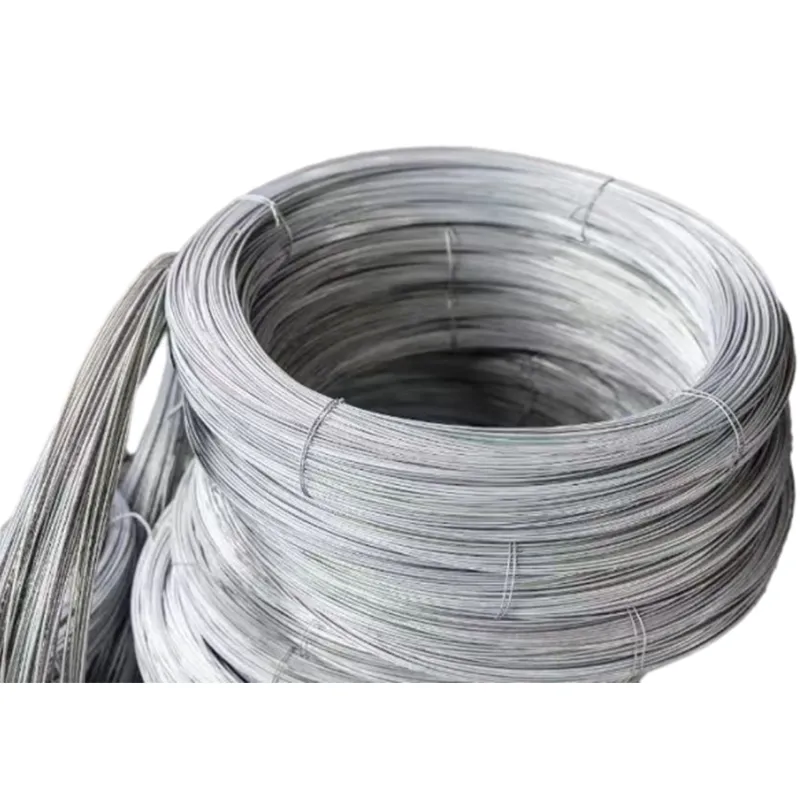-
 Phone:
Phone: -
 Email:
Email:

cardboard bale wire
The Importance of Cardboard Bale Wire in Recycling Processes
In today’s environmentally conscious world, recycling has become an essential part of waste management and sustainability efforts. Among the myriad of recyclable materials, cardboard stands out due to its widespread use in packaging and shipping. As the recycling industry continues to evolve, the role of cardboard bale wire emerges as a crucial element in the efficient processing of cardboard waste.
What is Cardboard Bale Wire?
Cardboard bale wire is a specialized wire used to bind and secure bales of recyclable cardboard during the recycling process. These bales are compacted to maximize storage space and facilitate transportation to recycling facilities. The wire is designed to withstand the rigors of handling and transportation, ensuring that the bales remain intact and do not break apart, which could lead to contamination and inefficiencies in the recycling process.
Types of Cardboard Bale Wire
There are various types of cardboard bale wire available, each tailored for specific applications
. The most common materials include1. Steel Wire This is the traditional choice for binding cardboard bales. Steel wire is incredibly strong and durable, capable of maintaining its integrity under heavy loads. It is typically used in high-volume recycling operations where robustness is paramount.
2. Polypropylene (PP) Wire An alternative to steel, PP wire is lightweight and resistant to rust. This makes it a suitable choice for environments where moisture could lead to corrosion. However, it may not be as strong as steel wire, making it more appropriate for smaller operations or lighter bales.
3. Coated Wire Some wires come with a protective coating to enhance resistance to environmental factors. Coated wires combine the strength of steel with additional protection against corrosion, making them a versatile option for various recycling scenarios.
cardboard bale wire

The Role of Cardboard Bale Wire in the Recycling Process
The proper binding of cardboard bales is crucial for several reasons
1. Space Efficiency Properly secured bales take up less space, making it easier to store and transport them. This efficiency not only lowers transportation costs but also maximizes the use of existing recycling infrastructure.
2. Contamination Prevention Loose bales can easily become contaminated with non-recyclable materials, which can damage machinery at recycling plants and lead to increased costs. Secure binding helps to minimize this risk by keeping materials organized and intact.
3. Improved Handling When bales are bound securely, they are easier to handle during loading and unloading processes. This efficiency is vital in busy recycling facilities where time is of the essence.
4. Enhanced Safety Loose or improperly bound bales can pose safety hazards in recycling facilities. The risk of bales falling or shifting can endanger workers. Utilizing quality cardboard bale wire mitigates these risks and contributes to a safer work environment.
Conclusion
As the demand for recycling continues to grow, so does the importance of every component involved in the process, including cardboard bale wire. By understanding its role and ensuring the use of high-quality materials, recycling facilities can operate more effectively, contributing to a more sustainable future. The proper use of cardboard bale wire not only enhances operational efficiency but also plays a vital role in protecting the environment by ensuring that recyclable materials are processed correctly and minimizing waste. As we look towards a greener future, innovations in recycling materials and techniques, including improved bale binding solutions, will be essential in achieving our sustainability goals.
-
Wire Mesh for Every Need: A Practical SolutionNewsJul.25,2025
-
Steel Fences: Durable, Secure, and Stylish OptionsNewsJul.25,2025
-
Roll Top Fencing: A Smart Solution for Safety and SecurityNewsJul.25,2025
-
Cattle Farm Fencing Solutions for Maximum SecurityNewsJul.25,2025
-
Affordable Iron Binding Wire SolutionsNewsJul.25,2025
-
Affordable Galvanized Wire SolutionsNewsJul.25,2025
-
Wire Hanger Recycling IdeasNewsJul.25,2025








